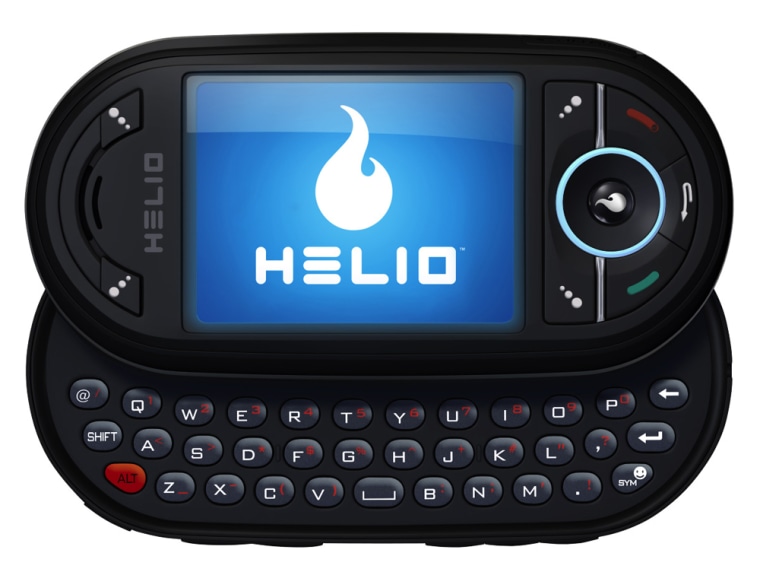It says something about the state of the cell phone industry that the product looming largest over the annual wireless show doesn't even exist yet. Never mind that it's coming from a company that's never even made a cell phone.
Indeed, the "preverberations" from Apple Inc.'s plan to bring its addictive design simplicity and elegance to wireless with the iPhone is palpable across a good many announcements slated for CTIA Wireless 2007, which opens on Tuesday.
While the prototype that Apple unveiled back in January instantly drew drools with its slender, sleek looks, the real test will be whether the iPhone's large touch-screen interface rewrites the rules for ease of use when it becomes available in June. As Motorola Inc.'s boom-and-bust fortunes with the Razr show, style isn't everything.
There's sure to be plenty of hyperventilation about mobile video and music at the show. So a core theme emerging among this week's planned product launches is how to make these devices less confusing as they get crammed and cramped with multimedia capabilities.
One such offering comes from a small, youth-oriented cellular service named Helio, a joint venture between Earthlink Inc. and Korea's SK Telecom Co. that on Monday unveiled a $295 handset called Ocean.
Billed as the first "dual-slider," the Ocean marks one of the more radical attempts to help clean the messy intersection between phone calls, text communications, portable media players and mobile Web access.
For making calls, the screen-side of the device can slide vertically to expose a number pad. For typing e-mail, text messages and instant messages, the Ocean can be turned horizontal and slide up along a different track to expose a full typewriter keyboard.
The handset, designed by Helio and made by Pantech, sports some other notable innovations intended to improve the user experience and combat the clunky factor. There's a separate microprocessor to run the media player, an efficiency Helio claims will allow 15 hours of music listening on a single battery charge.
There's also an integrated inbox to display all forms of written communication, combining e-mail, text messaging and instant messaging from the major portals in one place, instead of forcing users to toggle between applications. And while the full keyboard makes for easier text input, the Ocean also features an automatic search function triggered whenever you start typing.
"If you want to search, you want to search. The idea that you have to bring up a search box I think is counterintuitive," said Sky Dayton, Helio's chief executive.
He recalled that at a recent celebrity poker tournament, the people next to him were looking at actress Morgan Fairchild, who was seated at a nearby table. They wondered aloud how old she was, and Dayton got the answer for them within seconds. Without opening any applications, "I just typed into my device, 'How old is Morgan Fairchild?'" he said.
Also trying their hands at cobbling an easier-to-use combination phone and music player are Samsung Electronics Co. and Sony Ericsson.
Samsung's lightweight "UpStage," offered in the United States by Sprint Nextel Corp., is a "flip" phone, though not in the normal sense. The device is actually a two-sided candy bar that looks like a phone on one side and an MP3 music player on the other. A "flip" button on the phone's edge is pressed to switch between the two sides.
The phone side has a number pad and small screen for dialing calls and typing text messages, while the reverse features a large screen and touch-sensitive controls to navigate through song lists and view digital photos, video and Web pages.
The $299 UpStage, available for $149 with a two-year Sprint contract, also attempts to address the battery life issue that arises whenever handset makers try to balance size with power capacity. In this case, the price includes a "battery wallet" to slip the device into, providing up to 16 hours of music listening, the companies claim.
Without the wallet, the UpStage weighs just 2.6 ounces and is less than 0.4 inch thick.
Sony Ericsson, owned jointly by Japan's Sony Corp. and Sweden's LM Ericsson, introduced the latest addition to its Walkman phone lineup.
The W580, the first slider Walkman phone, is 0.55 inch thick and weighs 3.3 ounces. Sony Ericsson says the W580 offers up to 30 hours of music play time.
The company didn't announce a price or say which service provider will offer the phone, though it's based on a wireless technology that's only used by AT&T Inc.'s Cingular Wireless and T-Mobile USA among the major U.S. carriers.
Like the vast majority of new devices, all three of these handsets come with Bluetooth wireless to connect with a cordless headset.
Thankfully, the industry group that oversees the Bluetooth standard is using the CTIA show to announce a long-needed simplification in the often frustrating process of "pairing" two Bluetooth-enabled devices to communicate with one another.
Though sometimes it goes smoothly, the initial setup for Bluetooth pairing varies from device to device, with inconsistent menus and security code inputs often tripping up users.
The new specification reduces the number of steps in the pairing process while making the process more intuitive, improving security to prevent wireless intruders and also reducing power consumption, according to the Bluetooth Special Interest Group.
Under the new procedure, for example, when pairing a headset and phone both configured for the updated standard, all a user would need to do is turn on the headset, select "Add Headset" from the phone menu, and then watch the phone confirm it has found and connected with the headset through an encrypted link.
The improvement, however, won't begin to arrive in products until later this year.
In Apple time, that means after the iPhone.
